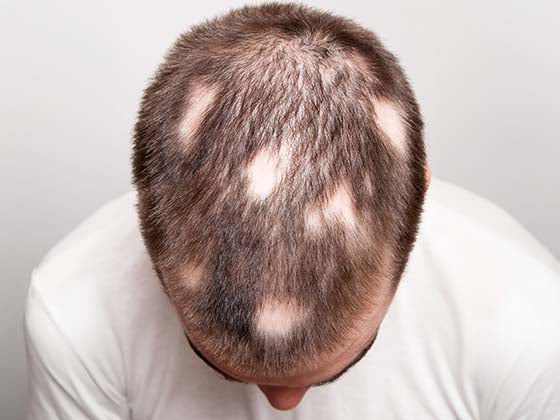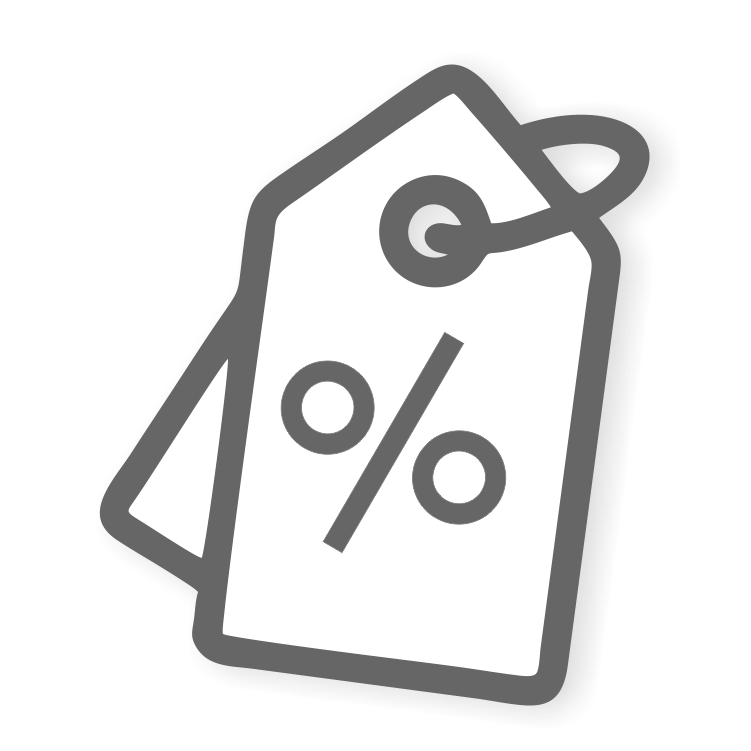Yogurt is frequently praised as an excellent natural component for hair care, and not just because it's a tasty snack! Yogurt is high in proteins, vitamins, and probiotics, which can benefit both your hair and scalp, promoting healthier development and a more balanced scalp environment. This blog explains why yogurt is so important to hair health.
The Science Behind Yogurt’s Benefits for Hair

Yogurt has a variety of useful ingredients, including proteins, probiotics, lactic acid, vitamins, minerals, fatty acids, and antioxidants, all of which help to maintain a healthy scalp and strong hair. Yogurt treats a variety of hair care issues, including dry scalp and dandruff, as well as hair breakage and thinning, by hydrating, strengthening, balancing, and preserving the scalp and hair.
Nutritional Components: What Makes Yogurt Effective for Hair?

Yogurt has a variety of nutrients, which contribute to its effectiveness in hair maintenance. The essential nutritional components that make it good for your hair are protein, vitamins, minerals, probiotics, lactic acid, fatty acids, and water.
How Probiotics in Yogurt Support Scalp Health

Probiotics in yogurt contribute significantly to scalp health by establishing a balanced environment on your skin and hair follicles. They specifically assist the scalp by balancing its microbiome, lowering inflammation, avoiding dandruff and flakiness, promoting scalp hydration, strengthening hair follicles, and increasing blood circulation.
Protein Power: Strengthening Hair from Root to Tip

Protein is a crucial building ingredient of hair that helps strengthen it from root to tip. Hair is composed of keratin, a type of protein; therefore, supplementing it with extra protein strengthens its structure and improves its general health. The protein in yogurt improves your hair by mending and strengthening hair strands, preventing hair breakage, encouraging healthy hair development, enhancing shine and smoothness, repairing split ends, and strengthening hair follicles.
Yogurt Treatments for Common Hair and Scalp Concerns

Some yogurt treatments for common hair and scalp issues:
-
Dry, dull hair: If your hair feels dry, frizzy, or lacks shine, yogurt can help restore moisture and softness. Ingredients are 2 tablespoons plain yogurt, 1 tablespoon honey Mix the yogurt and honey until smooth. Apply the mixture to your damp hair, focusing on the lengths and ends. Leave it on for 20-30 minutes before rinsing with lukewarm water.
-
Dandruff or itchy scalp: If you're dealing with dandruff or a dry, itchy scalp, yogurt’s probiotics and moisturizing properties can help soothe and balance the scalp. Ingredients are 2 tablespoons plain yogurt, 1 tablespoon fresh lemon juice Mix the yogurt and lemon juice, and apply it directly to your scalp. Massage gently to stimulate blood flow, then leave the mixture on for 20-30 minutes before rinsing with cool water.
-
Oily scalp: For those with an oily scalp, yogurt can help balance sebum production while providing a gentle cleanse. Ingredients are 2 tablespoons plain yogurt, 1/4 cucumber (blended). Blend the cucumber and mix it with yogurt. Apply the paste to your scalp, massaging gently. Leave it on for 15-20 minutes, then rinse thoroughly.
-
Damaged or weak hair: If your hair is damaged, weak, or prone to breakage, yogurt’s protein content helps strengthen and repair it. Ingredients are 2 tablespoons plain yogurt, 1/2 ripe avocado (mashed), 1 tablespoon olive oil. Mix the ingredients into a smooth paste. Apply it generously to your hair, especially the ends, and leave it on for 30 minutes. Rinse thoroughly with lukewarm water.
-
Frizzy hair: Yogurt can help smooth frizz by moisturizing the hair and adding shine. Ingredients are 2 tablespoons plain yogurt, 1 ripe banana (mashed) Mash the banana and mix it with yogurt. Apply the mask to your hair, focusing on frizzy areas. Leave it on for 20-30 minutes, then rinse with cool water. Bananas are rich in vitamins and natural oils that hydrate the hair, while yogurt strengthens and smooths, reducing frizz.
Yogurt for Dandruff Control and Scalp Irritation

Yogurt's calming, anti-inflammatory, and probiotic-rich characteristics make it an excellent natural treatment for dandruff and scalp irritation. Here's how yogurt helps with dandruff and reduces scalp irritation:
-
Probiotics for a healthy scalp microbiome: Yogurt contains probiotics (good bacteria) that can help balance the scalp's microbiome. An imbalance of microorganisms on the scalp can cause dandruff, dryness, and irritation. Probiotics in yogurt help combat unwanted bacteria and yeast (such as Malassezia, which is frequently associated with dandruff), fostering a healthier environment for hair growth and reducing flakiness and irritation.
-
Anti-inflammatory properties: Scalp discomfort is frequently the result of inflammation induced by an overgrowth of yeast, bacteria, or even severe dryness. Yogurt includes lactic acid, which reduces inflammation on the scalp. This can help to minimize the redness, itching, and discomfort associated with scalp irritation.
-
Moisturizing and hydrating: Dryness can be a primary cause of dandruff and discomfort. Yogurt's natural moisture hydrates the scalp, eliminating flakiness and itching caused by dry skin. The moisture also relieves inflammation and sensitivity, leaving the scalp feeling rejuvenated.
-
Exfoliation with lactic acid: Lactic acid in yogurt gently exfoliates the scalp, eliminating dead skin cells and product buildup that can lead to dandruff. This creates a cleaner, healthier scalp that is less likely to irritate and flake.
-
Balancing pH levels: Yogurt's somewhat acidic composition can help balance the pH levels of the scalp, which is essential for avoiding dandruff and inflammation. A healthy pH regulates the scalp's natural oils, preventing dryness and oiliness, both of which can contribute to dandruff.
DIY Yogurt Hair Masks for Frizz and Dryness

Some simple DIY yogurt hair masks you can try to combat frizz and dryness are:
-
Yogurt and honey hydrating mask: Ingredients are 2 tablespoons plain yogurt and 1 tablespoon honey. Mix the yogurt and honey until smooth. Apply the mixture evenly to damp hair, focusing on the mid-lengths and ends. Leave it on for 20-30 minutes, then rinse thoroughly with lukewarm water. Follow with your usual shampoo and conditioner if needed.
-
Yogurt and avocado deep conditioning mask: Ingredients are 2 tablespoons plain yogurt and 1/2 ripe avocado (mashed). Mash the avocado and mix it with the yogurt until you get a smooth paste. Apply the mask to your hair, starting at the roots and working your way down to the tips. Leave it on for 30-40 minutes, then rinse with lukewarm water. Follow up with a light conditioner if desired.
-
Yogurt, olive oil, and banana frizz control mask: Ingredients are 2 tablespoons plain yogurt, 1 ripe banana (mashed), and 1 tablespoon olive oil. Mash the banana and mix it with yogurt and olive oil. Apply the mixture to damp hair, concentrating on the dry, frizzy areas. Leave it on for 20-30 minutes, then rinse thoroughly with lukewarm water. Shampoo if needed.
-
Yogurt, coconut oil, and egg nourishing mask: Ingredients are 2 tablespoons plain yogurt, 1 tablespoon coconut oil, and 1 egg (optional, for extra protein). Warm the coconut oil slightly so it blends easily, then mix it with yogurt and the egg (if using). Apply the mask to damp hair, focusing on dry and frizzy areas. Leave it on for 20-30 minutes, then rinse thoroughly with lukewarm water. Follow with a mild shampoo if needed.
Repairing Damaged Hair with Yogurt and Natural Oils

Repairing damaged hair with yogurt and natural oils is an effective and nourishing way to restore strength, shine, and moisture to your strands. Both yogurt and natural oils are rich in nutrients that work together to heal and rejuvenate damaged hair. Here’s how each ingredient helps and how you can create simple DIY masks to repair your hair:
-
Yogurt and coconut oil repairing mask: Ingredients are 2 tablespoons plain yogurt and 1 tablespoon coconut oil (melted). Mix the yogurt with melted coconut oil until smooth. Apply the mixture generously to your hair, concentrating on the ends where damage is most likely to occur. Leave it on for 20-30 minutes. Rinse with lukewarm water and follow up with a gentle shampoo. Coconut oil penetrates deep into the hair shaft to repair and nourish, while yogurt adds protein to strengthen and restore moisture. This mask helps repair both the internal structure and outer shine of your hair.
-
Yogurt and olive oil nourishing mask: Ingredients are 2 tablespoons plain yogurt and 1 tablespoon olive oil. Warm the olive oil slightly (not too hot) and mix it with the yogurt. Apply the mask to damp hair, focusing on the ends and any particularly damaged areas. Leave it on for 30-40 minutes, then rinse with cool water. Olive oil provides deep hydration and helps restore hair’s elasticity, while yogurt strengthens and nourishes. Together, they work to reduce split ends and improve overall hair health.
-
Yogurt and argan oil repair mask: Ingredients are 2 tablespoons plain yogurt and 1 tablespoon argan oil. Mix the yogurt with argan oil until smooth. Apply the mixture to your hair, making sure to coat all strands, especially the damaged areas. Leave it on for 20-30 minutes, then rinse thoroughly with lukewarm water. Argan oil deeply moisturizes and protects hair from further damage, while yogurt helps repair the hair’s protein structure. This mask strengthens and restores softness to damaged hair.
-
Yogurt and castor oil growth and repair mask: Ingredients are 2 tablespoons plain yogurt and 1 tablespoon castor oil. Mix the yogurt with castor oil until well combined. Apply to the scalp and hair, concentrating on damaged or thinning areas. Leave the mask on for 30-40 minutes, then rinse with lukewarm water. Castor oil promotes healthy hair growth and prevents hair thinning, while yogurt strengthens and adds moisture. This mask works to repair damaged hair and promote regrowth.
-
Yogurt, honey, and almond oil repair mask: Ingredients are 2 tablespoons plain yogurt, 1 tablespoon honey, and 1 tablespoon almond oil Mix all ingredients until smooth. Apply the mask evenly to your hair, focusing on the ends. Leave it on for 20-30 minutes, then rinse thoroughly with cool water. Honey provides moisture, almond oil adds shine and nourishment, and yogurt strengthens the hair. This mask will leave your hair feeling soft, healthy, and less prone to breakage.
Integrating Yogurt into Your Hair Care Routine

Integrating yogurt into your hair care routine is a simple and effective way to nourish, hydrate, and strengthen your hair. Whether you're looking to tackle dryness, frizz, or damage, yogurt provides a natural solution. Here’s how you can seamlessly incorporate yogurt into your hair care routine:
-
Use yogurt as a weekly hair mask: One of the best ways to incorporate yogurt into your hair care routine is by using it as a weekly deep conditioning treatment. Yogurt can hydrate, repair, and strengthen your hair, all while keeping it soft and shiny. Apply a thick layer of plain yogurt to damp hair, focusing on the mid-lengths and ends. Leave it on for 20-30 minutes to allow the nutrients to penetrate. Rinse thoroughly with lukewarm water and follow up with your regular shampoo and conditioner. Use this treatment once a week for optimal results.
-
Yogurt as a scalp treatment: If you're dealing with dandruff, an itchy scalp, or other scalp irritation, yogurt can be a great treatment to soothe and balance your scalp’s health. Apply plain yogurt directly to your scalp, parting your hair to ensure the yogurt reaches the skin. Gently massage the yogurt into the scalp for a few minutes to stimulate circulation and help the probiotics work. Leave the yogurt on for 15-20 minutes, then rinse with cool water. Shampoo and condition as usual.
-
Shampoo and condition with yogurt-infused products: If you want a more convenient and consistent way to incorporate yogurt into your routine, look for shampoos and conditioners that feature yogurt or yogurt-based ingredients. These products often have the same nourishing benefits as a yogurt hair mask, but you can use them every time you wash your hair. Choose a yogurt-infused shampoo and conditioner that suits your hair type (for example, one with added moisture, volume, or repair benefits). Wash your hair as usual, massaging the product into the scalp and hair to allow the yogurt to nourish. Rinse thoroughly and follow up with a leave-in conditioner or styling product if desired.
-
DIY leave-in conditioner with yogurt: Yogurt can be used as a leave-in treatment to help detangle hair, smooth frizz, and add moisture. Mix a small amount of yogurt (1 tablespoon) with water in a spray bottle to dilute it. Shake well and lightly spray the mixture onto damp hair. Focus on the ends and any frizzy areas. You can leave this in without rinsing. Style your hair as usual.
-
Yogurt for frizz control: If your hair tends to get frizzy, yogurt can help smooth the cuticle and add moisture, giving you softer and more manageable hair. After washing and conditioning, apply a small amount of yogurt to the ends of damp hair. Gently comb through to evenly distribute and tame frizz. Let your hair air dry or blow-dry as usual.
-
Yogurt-infused hair rinse: For a gentle hair rinse that adds shine and nourishes hair, you can make a yogurt-based rinse. Mix 2 tablespoons of yogurt with 1 cup of water. After shampooing and conditioning your hair, pour the mixture over your hair. Massage it gently into your scalp and hair, then rinse with cool water to seal the cuticle and add shine.
-
Yogurt for split end repair: While yogurt won’t directly "heal" split ends, it can help prevent further damage by nourishing your hair and improving its strength. Regular use of yogurt treatments can prevent split ends from forming and minimize hair breakage. Apply a yogurt and honey mask to the ends of your hair once a week to prevent dryness and splitting. Trim your hair regularly to keep the ends healthy, but also keep using the yogurt treatment to maintain strength.
-
Post-wash yogurt leave-in smoothie for extra shine: If you have naturally curly or wavy hair, using yogurt as a styling cream can define curls and add natural shine. Mix 1-2 tablespoons of yogurt with your regular leave-in conditioner or curl cream. Apply to damp hair, scrunching to define curls or waves. Allow your hair to air dry or diffuse for bouncy, shiny curls.
Step-by-Step Guide to Using Yogurt for Hair Care

Using yogurt for hair treatment is both simple and effective! It contains nutrients such as protein, vitamins, and probiotics, all of which can help strengthen, moisturize, and repair hair. The steps for incorporating yogurt into your hair care regimen are as follows: Select the correct yogurt, prepare your hair, select a treatment, rinse thoroughly, and continue with regular hair care.
Combining Yogurt with Other Natural Ingredients

Combining yogurt with other natural ingredients can elevate the benefits and create more targeted treatments for your specific hair concerns. Here’s a guide on how to pair yogurt with different natural ingredients for a variety of hair care goals:
-
Yogurt and Honey: Ingredients are 2 tablespoons plain yogurt and 1 tablespoon honey. Mix yogurt and honey until smooth. Apply it to damp hair, focusing on the ends. Leave on for 20-30 minutes. Rinse thoroughly with lukewarm water.
-
Yogurt and avocado: Ingredients are 2 tablespoons plain yogurt and 1/2 ripe avocado (mashed). Mash the avocado and mix it with yogurt until smooth. Apply the mixture to your damp hair, starting from the roots to the tips. Leave on for 20-30 minutes, then rinse with cool water.
-
Yogurt and coconut oil: Ingredients are 2 tablespoons of plain yogurt and 1 tablespoon of coconut oil (melted). Melt the coconut oil and mix it with yogurt until you get a smooth paste. Apply to damp hair, concentrating on frizzy or dry sections. Leave on for 30 minutes, then rinse thoroughly with lukewarm water.
-
Yogurt and lemon juice: Ingredients are 2 tablespoons of plain yogurt and 1 tablespoon fresh lemon juice. Mix yogurt and lemon juice together. Apply directly to the scalp, massaging gently. Leave on for 15-20 minutes, then rinse thoroughly with cool water.
-
Yogurt and olive oil: Ingredients are 2 tablespoons plain yogurt and 1 tablespoon olive oil. Mix yogurt and olive oil until smooth. Apply it to your hair, focusing on the dry or damaged areas. Leave on for 30-40 minutes, then rinse with lukewarm water.
How Often Should You Use Yogurt for Best Results?

For most hair types, once a week is a good starting point for using yogurt as a mask or treatment. However, feel free to adjust the frequency based on how your hair responds. Over time, you’ll find the right balance for your hair’s specific needs, whether it’s for moisture, repair, frizz control, or scalp health. If you’re unsure, starting with a once-a-week routine is usually a safe bet!
Is Yogurt Right for Your Hair? Personalized Tips and Insights

Yogurt can be a beneficial addition to your hair care routine, offering hydration, repair, and even promoting scalp health. To get the best results, personalize how often you use it based on your hair’s needs:
-
Dry or damaged hair: Weekly or biweekly deep conditioning.
-
Oily Hair: Every 2 weeks to balance scalp oil production.
-
Frizzy or Curly Hair: Weekly for added moisture and definition.
-
Fine or Limp Hair: Every 2 weeks to avoid weighing it down.
-
Dandruff or Scalp Issues: Once a week for soothing and balancing effects.
-
Normal Hair: Weekly or biweekly for maintenance.
As you experiment with yogurt, adjust based on how your hair responds, and you’ll soon find the perfect balance that works for you!
















